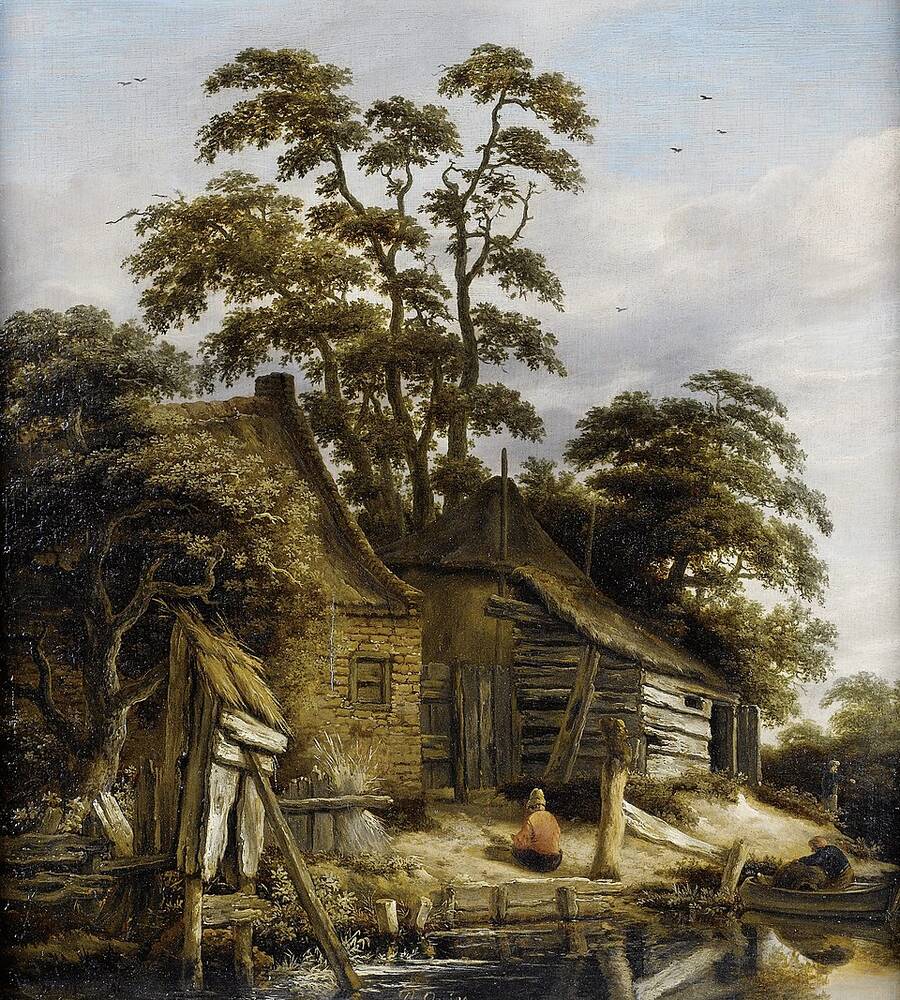Communitas Sacra [Latin] – Sacred Community
We are all connected; To each other, biologically. To the earth, chemically. To the rest of the universe atomically. - Neil deGrasse Tyson
The Essence of Social Spirituality
Social spirituality finds transcendence in the collective bonds of community, where shared rituals, values, and gatherings become sacred expressions of the human spirit. It views connection as animated by a universal life force—akin to the ancient pneuma (Greek for breath or spirit) or ruach (Hebrew for spirit)—flowing through communal experiences that unite individuals in purpose and meaning. From Quaker meetings to indigenous powwows, social spirituality emphasizes the power of togetherness, distinct from service-oriented spirituality’s focus on altruistic acts or intellectual spirituality’s rational inquiry. It transforms group interactions into spiritual practice, fostering unity and shared identity. This exploration delves into its principles, practices, and role in humanity’s quest for connection.
Foundations of Social Spirituality
At its core, social spirituality is rooted in the belief that the divine or universal essence is most vividly experienced in community. It sees the life force, echoing pneuma, as a shared energy that emerges when people gather with intention, whether in worship, celebration, or mutual support. Practices like communal prayer or storytelling circles create a sacred space where individual souls resonate as one. This approach draws from traditions like the early Christian agape feasts or African tribal gatherings, emphasizing collective harmony over solitary pursuit. Social spirituality appeals to those who find transcendence in the interplay of shared human experience, blending personal faith with communal purpose.
Practices and Rituals
Social spiritual practices center on collective activities that foster connection and meaning. Communal worship, such as Quaker silent meetings or Jewish synagogue services, creates shared sacred moments. Festivals, like the Hindu Diwali or Native American powwows, unite communities through ritual and celebration. Storytelling circles, common in indigenous cultures, pass down spiritual wisdom through shared narratives. Modern practices, like secular community gatherings or interfaith dialogues, build bonds across beliefs. These rituals, whether religious or secular, harness the collective spirit, transforming group interaction into a conduit for transcendence.
Practices of Social Spirituality
- Communal Worship: Group rituals, like prayers or silent meetings, for shared transcendence.
- Festivals and Celebrations: Collective events, like powwows or religious holidays, fostering unity.
- Storytelling Circles: Sharing narratives to preserve spiritual and cultural wisdom.
- Community Gatherings: Secular or interfaith events to build connection and purpose.
Diversity Across Cultures
Social spirituality thrives across global traditions, shaped by cultural contexts. In Christianity, early church gatherings or modern megachurch services emphasize collective worship. Indigenous traditions, like the Lakota Sun Dance, unite tribes in spiritual renewal. African Ubuntu philosophy underscores community as a spiritual cornerstone, valuing interconnectedness. Hindu festivals, such as Holi, blend joy with spiritual unity. Secular movements, like Sunday Assemblies, create non-religious communal spaces for shared values. These diverse expressions highlight social spirituality’s universal appeal, fostering connection through collective rituals and shared identity.
Strengths and Challenges
The strength of social spirituality lies in its ability to forge deep bonds, creating a sense of belonging that transcends individual differences. It fosters resilience, as communities support members through shared values and rituals. Its inclusivity allows it to bridge religious and secular divides, appealing to diverse seekers. However, group dynamics can lead to conformity, stifling individual expression. Conflicts within communities, whether ideological or cultural, may disrupt unity. Balancing collective harmony with personal autonomy is key, as is ensuring inclusivity in diverse or polarized settings.
The Personal and the Collective
Social spirituality inherently blends the personal and communal. An individual’s participation in a group ritual, like a prayer circle, reflects personal devotion, while the collective act amplifies spiritual meaning. The life force—whether divine spirit or ruach—flows through shared experiences, uniting participants in a shared quest for transcendence. For example, a powwow’s drumbeat connects dancers to each other and the earth, while a secular community event fosters belonging through shared values. This duality makes social spirituality a powerful bridge between the self and the collective, embodying the sacred in togetherness.
Spiritual Traditions and Expressions
- Christianity: Communal worship through church services or agape feasts.
- Indigenous Traditions: Powwows or Sun Dances for tribal unity and renewal.
- Hinduism: Festivals like Diwali or Holi for spiritual and communal celebration.
- Secular Assemblies: Non-religious gatherings for shared values and connection.
Social Spirituality in a Modern Context
In today’s interconnected yet fragmented world, social spirituality offers a vital path for connection. Interfaith gatherings and secular community events respond to a growing desire for shared meaning in diverse societies. Digital platforms, like virtual worship or online forums, extend communal practices, though they risk losing the intimacy of in-person connection. Scientific insights on social bonding, such as oxytocin’s role in group cohesion, align with spiritual views of a shared life force. Challenges include navigating cultural divides and ensuring inclusivity in polarized times. For seekers, social spirituality transforms community into a sacred space, fostering transcendence through collective bonds.
Bridging to Broader Exploration
Social spirituality, with its emphasis on communal connection, builds on service-oriented spirituality’s altruism while contrasting with intellectual spirituality’s solitary inquiry. It shares traditional spirituality’s focus on collective identity but prioritizes living communities over ancestral ties. The series continues with creative spirituality, which channels spiritual expression through art, offering another lens on humanity’s quest for meaning. Social spirituality’s sacred bonds illuminate the soul’s search for unity through togetherness.










Communitas Sacra [Latin] – Sacred Community
We are all connected; To each other, biologically. To the earth, chemically. To the rest of the universe atomically. - Neil deGrasse Tyson
The Essence of Social Spirituality
Social spirituality finds transcendence in the collective bonds of community, where shared rituals, values, and gatherings become sacred expressions of the human spirit. It views connection as animated by a universal life force—akin to the ancient pneuma (Greek for breath or spirit) or ruach (Hebrew for spirit)—flowing through communal experiences that unite individuals in purpose and meaning. From Quaker meetings to indigenous powwows, social spirituality emphasizes the power of togetherness, distinct from service-oriented spirituality’s focus on altruistic acts or intellectual spirituality’s rational inquiry. It transforms group interactions into spiritual practice, fostering unity and shared identity. This exploration delves into its principles, practices, and role in humanity’s quest for connection.
Foundations of Social Spirituality
At its core, social spirituality is rooted in the belief that the divine or universal essence is most vividly experienced in community. It sees the life force, echoing pneuma, as a shared energy that emerges when people gather with intention, whether in worship, celebration, or mutual support. Practices like communal prayer or storytelling circles create a sacred space where individual souls resonate as one. This approach draws from traditions like the early Christian agape feasts or African tribal gatherings, emphasizing collective harmony over solitary pursuit. Social spirituality appeals to those who find transcendence in the interplay of shared human experience, blending personal faith with communal purpose.
Practices and Rituals
Social spiritual practices center on collective activities that foster connection and meaning. Communal worship, such as Quaker silent meetings or Jewish synagogue services, creates shared sacred moments. Festivals, like the Hindu Diwali or Native American powwows, unite communities through ritual and celebration. Storytelling circles, common in indigenous cultures, pass down spiritual wisdom through shared narratives. Modern practices, like secular community gatherings or interfaith dialogues, build bonds across beliefs. These rituals, whether religious or secular, harness the collective spirit, transforming group interaction into a conduit for transcendence.
Practices of Social Spirituality
Diversity Across Cultures
Social spirituality thrives across global traditions, shaped by cultural contexts. In Christianity, early church gatherings or modern megachurch services emphasize collective worship. Indigenous traditions, like the Lakota Sun Dance, unite tribes in spiritual renewal. African Ubuntu philosophy underscores community as a spiritual cornerstone, valuing interconnectedness. Hindu festivals, such as Holi, blend joy with spiritual unity. Secular movements, like Sunday Assemblies, create non-religious communal spaces for shared values. These diverse expressions highlight social spirituality’s universal appeal, fostering connection through collective rituals and shared identity.
Strengths and Challenges
The strength of social spirituality lies in its ability to forge deep bonds, creating a sense of belonging that transcends individual differences. It fosters resilience, as communities support members through shared values and rituals. Its inclusivity allows it to bridge religious and secular divides, appealing to diverse seekers. However, group dynamics can lead to conformity, stifling individual expression. Conflicts within communities, whether ideological or cultural, may disrupt unity. Balancing collective harmony with personal autonomy is key, as is ensuring inclusivity in diverse or polarized settings.
The Personal and the Collective
Social spirituality inherently blends the personal and communal. An individual’s participation in a group ritual, like a prayer circle, reflects personal devotion, while the collective act amplifies spiritual meaning. The life force—whether divine spirit or ruach—flows through shared experiences, uniting participants in a shared quest for transcendence. For example, a powwow’s drumbeat connects dancers to each other and the earth, while a secular community event fosters belonging through shared values. This duality makes social spirituality a powerful bridge between the self and the collective, embodying the sacred in togetherness.
Spiritual Traditions and Expressions
Social Spirituality in a Modern Context
In today’s interconnected yet fragmented world, social spirituality offers a vital path for connection. Interfaith gatherings and secular community events respond to a growing desire for shared meaning in diverse societies. Digital platforms, like virtual worship or online forums, extend communal practices, though they risk losing the intimacy of in-person connection. Scientific insights on social bonding, such as oxytocin’s role in group cohesion, align with spiritual views of a shared life force. Challenges include navigating cultural divides and ensuring inclusivity in polarized times. For seekers, social spirituality transforms community into a sacred space, fostering transcendence through collective bonds.
Bridging to Broader Exploration
Social spirituality, with its emphasis on communal connection, builds on service-oriented spirituality’s altruism while contrasting with intellectual spirituality’s solitary inquiry. It shares traditional spirituality’s focus on collective identity but prioritizes living communities over ancestral ties. The series continues with creative spirituality, which channels spiritual expression through art, offering another lens on humanity’s quest for meaning. Social spirituality’s sacred bonds illuminate the soul’s search for unity through togetherness.